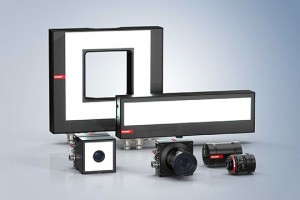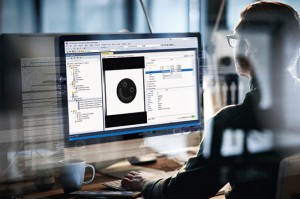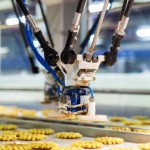Robots and machine vision ensure Christmas cheer
 Robotic processes guided by machine vision ensure every child has a merry Christmas, by ensuring quality standards are met in toy manufacturing, as Adam Carless, vision product specialist at automation and control technology expert Beckhoff UK, explains.
Robotic processes guided by machine vision ensure every child has a merry Christmas, by ensuring quality standards are met in toy manufacturing, as Adam Carless, vision product specialist at automation and control technology expert Beckhoff UK, explains.
There’s nothing worse than opening a new toy at Christmas to find that it’s broken. Machine vision, a critical component of Industry 4.0, has revolutionised manufacturing processes by introducing intelligent image acquisition and analysis capabilities that help eliminate such quality control problems. It empowers manufacturing operations with real-time insights, enabling them to achieve high levels of precision, efficiency and quality control.
Machine vision systems typically comprise cameras, specialised image processing software and intelligent algorithms that work in tandem to analyse and interpret visual data. These systems can identify defects, verify product integrity and optimise production processes, ensuring consistent adherence to quality standards.
The quality standards for children’s toys encompass various aspects, especially material composition, construction and durability. Rigorous testing procedures are employed to evaluate toys against established safety standards, ensuring they are free from harmful substances, sharp edges, choking hazards and other potential dangers.
Adherence to quality standards is crucial for preventing adverse incidents and safeguarding children’s health. Substandard toys may pose serious risks, such as choking hazards from small detachable parts, ingestion of toxic materials, or exposure to sharp edges that can cause injuries.
Within the production line, machine vision finds applications across a wide spectrum of tasks. Arguably, the most important role is product inspection. Using machine vision in this manner eliminates the need for manual inspections, while reducing cycle times.
 Much like the joy of unwrapping a present to reveal its contents, vision systems delve beneath the surface, offering insights that go beyond the visible. Vision software can quickly detect defects – some that if inspected manually, would not be seen with the naked eye, measure dimensions and perform quality checks. The capabilities of machine vision are also enhanced to ensure faster and more accurate equipment alignment, assembly verification and part recognition.
Much like the joy of unwrapping a present to reveal its contents, vision systems delve beneath the surface, offering insights that go beyond the visible. Vision software can quickly detect defects – some that if inspected manually, would not be seen with the naked eye, measure dimensions and perform quality checks. The capabilities of machine vision are also enhanced to ensure faster and more accurate equipment alignment, assembly verification and part recognition.
Machine vision systems can also transform manufacturing processes by enabling automated guidance and positioning of components and optimising production flow through real-time monitoring and analysis. These systems guide robots and robotic arms with precision, reducing errors and enhancing production accuracy. Additionally, they provide actionable insights into production flow, identifying bottlenecks and optimising process parameters to streamline operations, reduce downtime and improve overall efficiency.
In terms of toy manufacturing, this means that machine vision can inspect toys for defects, such as cracks, scratches or misaligned parts, verify that they are assembled and labelled correctly and, most importantly, that they meet the rigorous safety standards of the industry.
 For manufacturers, integrating machine vision into their production processes is not as complex as it once was. PC-based control provides an ideal solution in this domain: for example, the TwinCAT Vision solution from Beckhoff UK seamlessly integrates image processing into a unified control platform, encompassing PLC, motion control, robotics, high-end measurement technology, IoT and HMI. This significantly simplifies engineering by enabling camera configuration and programming within the familiar PLC environment.
For manufacturers, integrating machine vision into their production processes is not as complex as it once was. PC-based control provides an ideal solution in this domain: for example, the TwinCAT Vision solution from Beckhoff UK seamlessly integrates image processing into a unified control platform, encompassing PLC, motion control, robotics, high-end measurement technology, IoT and HMI. This significantly simplifies engineering by enabling camera configuration and programming within the familiar PLC environment.
Additionally, all image processing-related control functions can be precisely synchronised in real time within the runtime system. Latency is eliminated, and image processing algorithms execute in real time, representing a significant advancement over conventional machine vision solutions. With TwinCAT Vision, machine builders can seamlessly integrate image processing tasks into the central control system, paving the way for more sophisticated machine designs – and more sophisticated toy designs too.
Exploring the intricacies of machine vision and its influence on manufacturing processes serves as a reminder of the critical role quality standards play, particularly in the creation of toys designed to bring joy to children. Broken toys at Christmas can shatter the magic of the season, making the implementation of machine vision in production processes all the more crucial – because, after all, nothing beats the joy of unwrapping a perfectly crafted toy on Christmas morning.
















